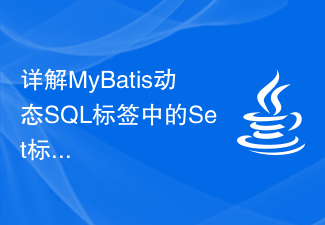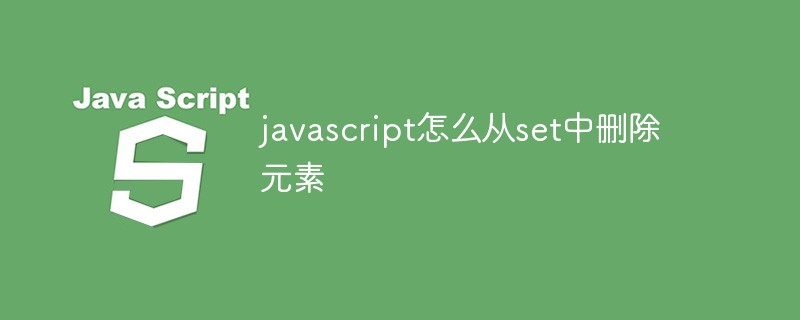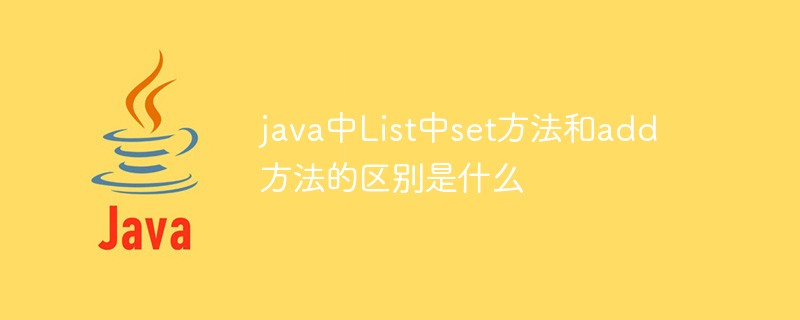set_exception_handler() function sets a user-defined function that handles all uncaught exceptions.
The output of the above code should look like this:
In the above code, there is no "catch" block, but the top-level exception handler is triggered. This function should be used to catch all uncaught exceptions.
Exception rules
- Code that requires exception handling should be placed within a try code block to catch potential exceptions.
- Every try or throw block must have at least one corresponding catch block.
- Use multiple catch blocks to catch different kinds of exceptions.
- Exceptions can be re-thrown in a catch block within a try block.
In short: if an exception is thrown, you must catch it.
The above introduces PHP exception handling - setting up the top-level exception handler, including aspects of it. I hope it will be helpful to friends who are interested in PHP tutorials.
 详解MyBatis动态SQL标签中的Set标签功能Feb 26, 2024 pm 07:48 PM
详解MyBatis动态SQL标签中的Set标签功能Feb 26, 2024 pm 07:48 PMMyBatis动态SQL标签解读:Set标签用法详解MyBatis是一个优秀的持久层框架,它提供了丰富的动态SQL标签,可以灵活地构建数据库操作语句。其中,Set标签是用于生成UPDATE语句中SET子句的标签,在更新操作中非常常用。本文将详细解读MyBatis中Set标签的用法,以及通过具体的代码示例来演示其功能。什么是Set标签Set标签用于MyBati
 Java中的ConcurrentModificationException异常的产生原因和解决方法Jun 25, 2023 am 10:33 AM
Java中的ConcurrentModificationException异常的产生原因和解决方法Jun 25, 2023 am 10:33 AM在Java中,当多个线程同时操作一个集合对象时,有可能会发生ConcurrentModificationException异常,该异常通常发生在遍历集合时进行修改或者删除元素的操作,这会导致集合的状态出现不一致,从而抛出异常。本文将深入探讨该异常的产生原因和解决方法。一、异常产生原因通常情况下,ConcurrentModificationException异
 javascript怎么从set中删除元素Jan 12, 2022 am 10:56 AM
javascript怎么从set中删除元素Jan 12, 2022 am 10:56 AM删除元素的方法:1、使用delete(),可从Set对象中删除指定的元素,语法“setObj.delete(value);”;2、使用clear(),可删除Set对象中的所有元素,语法“setObj.clear();”。
 Java中的UnsupportedEncodingException异常该如何处理?Jun 25, 2023 am 08:02 AM
Java中的UnsupportedEncodingException异常该如何处理?Jun 25, 2023 am 08:02 AMJava中的UnsupportedEncodingException异常该如何处理?在Java编程中,可能会遇到UnsupportedEncodingException异常。这个异常通常是由于编码转换不正确或编码不支持造成的。在这篇文章中,我们将介绍UnsupportedEncodingException异常的原因和如何处理它。什么是UnsupportedE
 PHP Fatal error: Uncaught exception ‘PDOException’的解决方法Jun 23, 2023 pm 12:09 PM
PHP Fatal error: Uncaught exception ‘PDOException’的解决方法Jun 23, 2023 pm 12:09 PM在PHP开发中,可能会遇到“PHPFatalerror:Uncaughtexception‘PDOException’”这样的错误,这是由于PHP操作数据库的时候出现了错误所引发的异常。如果不及时处理这个错误,就会导致程序中断或者出现无法预期的错误。那么如何解决这个问题呢?下面是一些常见的解决方法。一、检查数据库参数首先,我们需要检查连接数据库时传
 盘点Python编程中dict和set常用用法Jul 25, 2023 pm 04:52 PM
盘点Python编程中dict和set常用用法Jul 25, 2023 pm 04:52 PM本文基于Python基础,介绍了如何去使用dict和set,使用key-value存储结构的dict在Python中非常有用,选择不可变对象作为key很重要,最常用的key是字符串。
 java中List中set方法和add方法的区别是什么Apr 19, 2023 pm 07:49 PM
java中List中set方法和add方法的区别是什么Apr 19, 2023 pm 07:49 PM前言在Java中的常用的集合接口List中有两个非常相似的方法:Eset(intindex,Eelement);voidadd(intindex,Eelement);这两个方法都是在集合的指定位置插入指定的元素,那么这两个方法到底有什么区别呢?接下来我们通过ArrayList这个我们常用集合实现来看一下这两个方法的差异相同点首先我们来看一下这两个方法在ArrayList中的相同点他们都会在集合的指定位置插入新的元素,例如下面的例子:#在集合的第2位插入一个F#通过add方法插入Listlist=
 Java中的ConcurrentModificationException异常常见原因是什么?Jun 25, 2023 am 11:07 AM
Java中的ConcurrentModificationException异常常见原因是什么?Jun 25, 2023 am 11:07 AMJava中的ConcurrentModificationException异常常见原因是什么?当在使用Java集合框架中迭代器遍历集合的时候,有时候会抛出ConcurrentModificationException异常,这是常见的Java异常之一。那么,这个异常的产生是什么原因呢?首先,我们需要了解Java集合框架提供的迭代器是有状态的。也就是说,在遍历时


Hot AI Tools

Undresser.AI Undress
AI-powered app for creating realistic nude photos

AI Clothes Remover
Online AI tool for removing clothes from photos.

Undress AI Tool
Undress images for free

Clothoff.io
AI clothes remover

AI Hentai Generator
Generate AI Hentai for free.

Hot Article

Hot Tools

ZendStudio 13.5.1 Mac
Powerful PHP integrated development environment

mPDF
mPDF is a PHP library that can generate PDF files from UTF-8 encoded HTML. The original author, Ian Back, wrote mPDF to output PDF files "on the fly" from his website and handle different languages. It is slower than original scripts like HTML2FPDF and produces larger files when using Unicode fonts, but supports CSS styles etc. and has a lot of enhancements. Supports almost all languages, including RTL (Arabic and Hebrew) and CJK (Chinese, Japanese and Korean). Supports nested block-level elements (such as P, DIV),

SecLists
SecLists is the ultimate security tester's companion. It is a collection of various types of lists that are frequently used during security assessments, all in one place. SecLists helps make security testing more efficient and productive by conveniently providing all the lists a security tester might need. List types include usernames, passwords, URLs, fuzzing payloads, sensitive data patterns, web shells, and more. The tester can simply pull this repository onto a new test machine and he will have access to every type of list he needs.

WebStorm Mac version
Useful JavaScript development tools

DVWA
Damn Vulnerable Web App (DVWA) is a PHP/MySQL web application that is very vulnerable. Its main goals are to be an aid for security professionals to test their skills and tools in a legal environment, to help web developers better understand the process of securing web applications, and to help teachers/students teach/learn in a classroom environment Web application security. The goal of DVWA is to practice some of the most common web vulnerabilities through a simple and straightforward interface, with varying degrees of difficulty. Please note that this software






